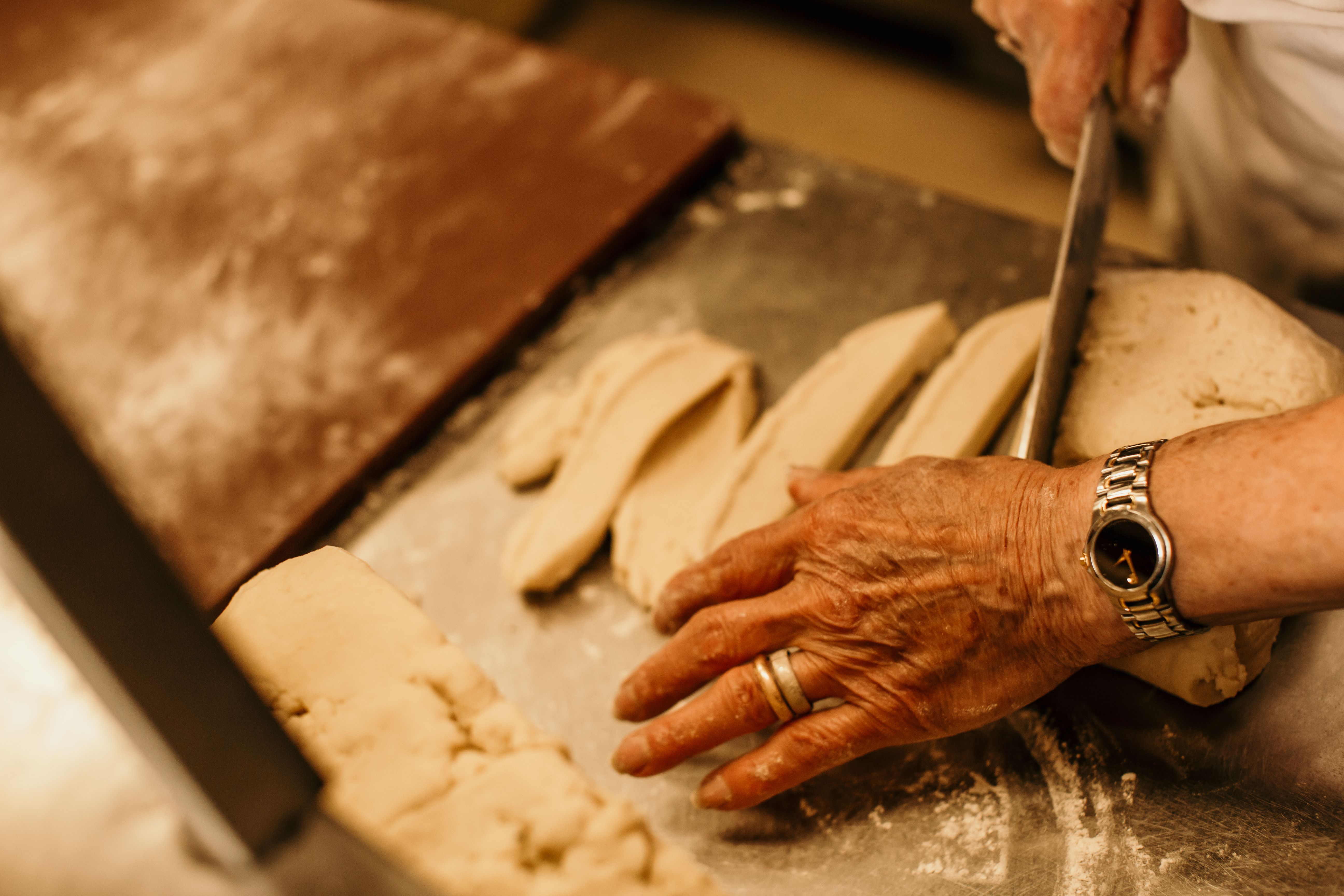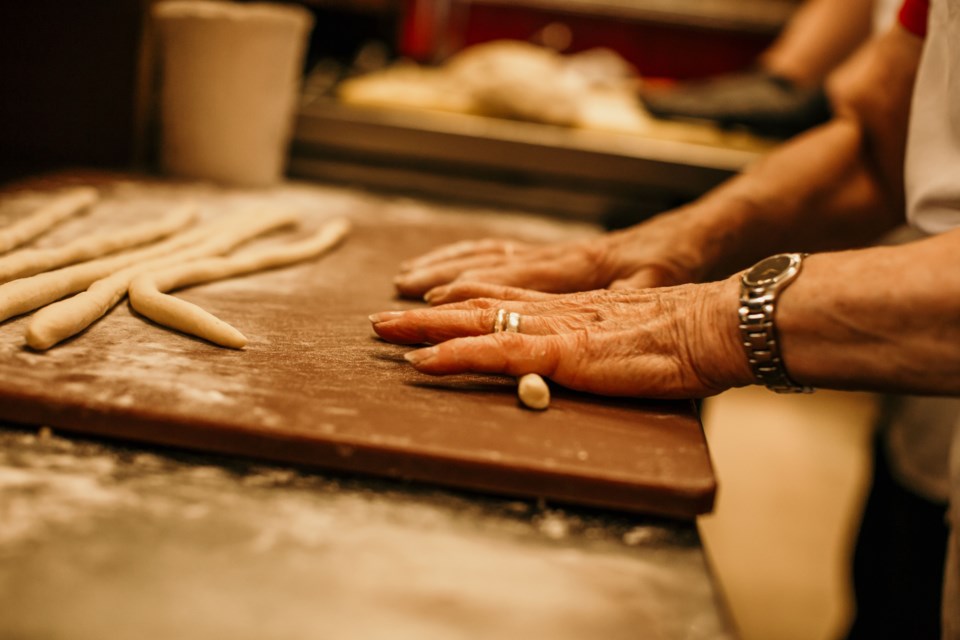For 35 years, my mother, Genoveffa has promptly arrived at my restaurants at 6 am each Friday. Kilos of riced potatoes wait for her to perform her magic, be transformed, and roll into Gnocchi like no other.

Generations of love, care and knowledge are presented through potato and flour. The word Gnocchi, derived from the Italian word "nocca", translated as "knuckle," seemed so appropriate here as I watched her hands knead into the board over and over, rolling and cutting strands from a ball of dough that was almost the size of her.
There is something remarkably therapeutic about making Gnocchi. The silky texture of the dough. The dance between precision and vigour. The physical connection between hand and food. It is truly a labour of love.
The experience of COVID-19 is igniting a return to the Italian tradition of "Cucina Povera," roughly translated as "poor cuisine," a creative, minimalist, no-waste approach to cooking from whatever limited ingredients you might have available. Arising from Italy's post-war economic depression, it was a cuisine born out of necessity, something transcendent created from turmoil. Much of the Italian food we know and love today, from Brushetta to Prosciutto, was founded in this tradition.
Gnocchi, a staple of this type of cuisine and born from the humble ingredients of potato, egg and flour, has been part of my family tradition for countless generations. This pandemic's isolation and economic strain create a perfect environment to fall in love with our kitchens again.
To use our time differently and to explore new passions. Gnocchi takes time (and patience) to make. Because of this, the dish is typically saved for Christmas or special holidays. Before the pandemic, this dish was a rarity in my household, and I came to find myself making it less and less outside of the restaurant. This last year has given me pause, to recognize and treasure these traditions, and to commit to their continuation. It is often difficult in our modern culture to remember that not everything is about speed and convenience. Sometimes the process is as important as the result.
Cooking is more than what is put on the plate. It becomes an experience and history. It is also therapy. Like the post-war Italians who transformed acute poverty into culinary ingenuity, we too have the opportunity to reconstruct the turmoil of this pandemic into prosperity in the kitchen. More importantly, to have the time to connect through food with those in our lives we love most. We have now been afforded the time to approach cooking with abandon, to experiment and play. Whether you are cooking for yourself, your family, your neighbour or whoever is in your bubble, embrace the intoxicating freedom to fail. If your family is anything like mine, they will forgive your kitchen mishaps, however, they won’t ever let you forget it!
As an all-sensory experience, memories and food are intrinsically linked. From seeing my mother making Gnocchi, I have realized these memories are not contained within our own experiences and immediate recollections. They can stretch across generations, and forge links between our ancestors through the transferral of knowledge, skills, and resourcefulness. As I make Gnocchi more frequently these days, I look down at my own hands. I see my mom's hands, my Nonna's hands, and also with pride, my contribution to the preservation of this tradition.
Nonna’s Gnocchi
Ingredients
- 4lbs Yukon Gold Potatoes – Cooked and Riced
- 1 Egg Yolk
- 2 Teaspoons Kosher Salt
- 3 ½ Cups All-Purpose Flour
- ½ Cup Grated Parmigiana Cheese
- Extra Flour for Dusting
Method
- Boil Yukon Gold potatoes in salted water until tender enough that a butter knife will pass through with some resistance.
- Drain the potatoes and allow them to cool.
- Peel and rice the potatoes.
- Add all ingredients together in a mixer and knead with the paddle attachment.
- Remove, and work on a floured surface, rolling the dough out into long strips, ensuring to add in more flour if necessary to achieve a slightly dry consistency. Gnocchi shouldn’t be sticky to cut.
- Cut the long strips into small dumplings.
- Blanch in salted water until they float.
- Plunge into an ice bath to cool.
- Heat in whatever sauce you like.
